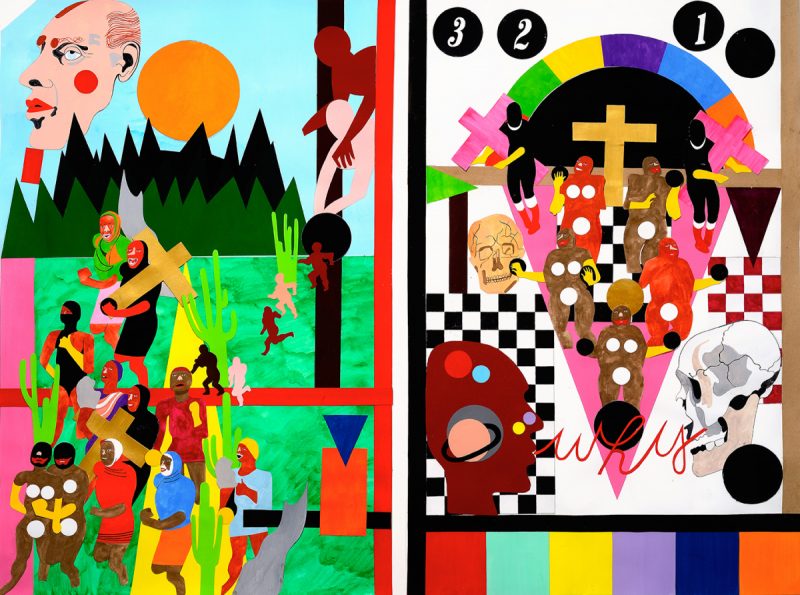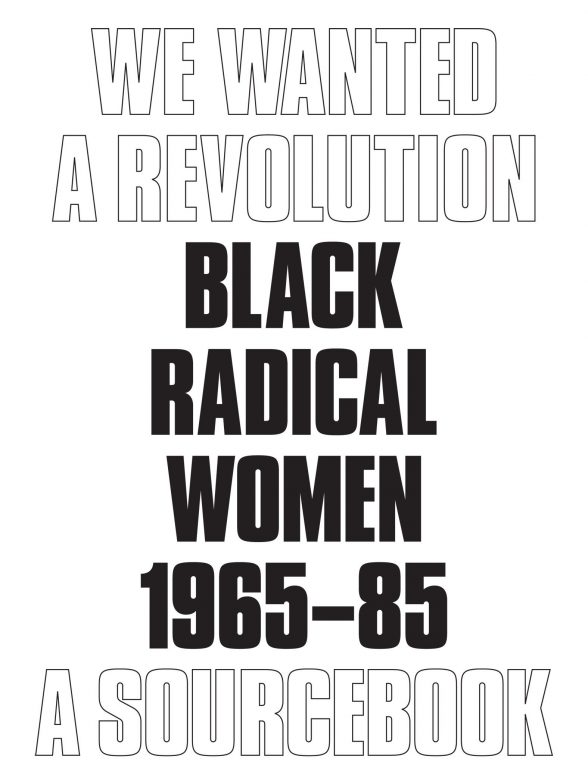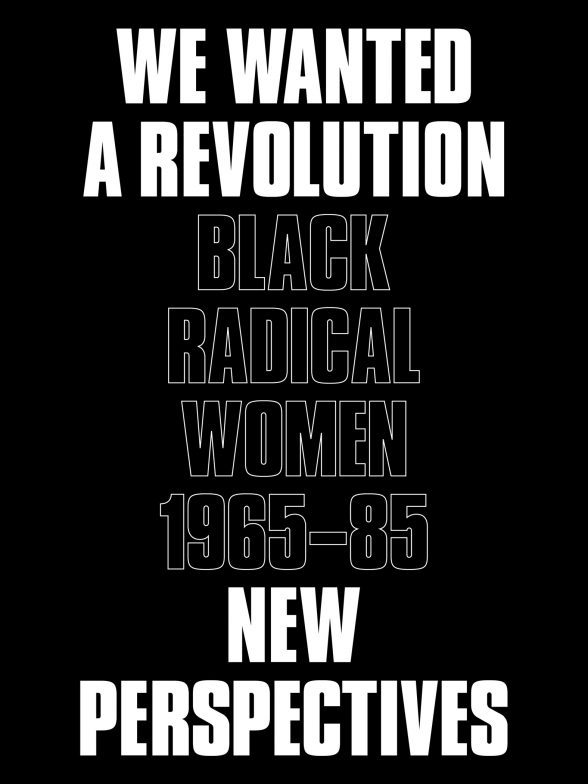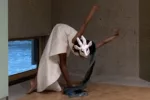Morris, Catherine and Rujeko Hockley, eds. We Wanted A Revolution: Black Radical Women 1965-1985: A Sourcebook. Brooklyn and Durham: Brooklyn Museum and Duke University Press, 2017.
Morris, Catherine and Rujeko Hockley, eds. We Wanted A Revolution: Black Radical Women 1965-1985: New Perspectives. Brooklyn and Durham: Brooklyn Museum and Duke University Press, 2018.
To accompany the revelatory exhibition “We Wanted A Revolution: Black Radical Women 1965-1985,” the Brooklyn Museum published two volumes rather than a standard catalog. The exhibition brought together work shown outside of the well-documented museums and galleries which paid almost no attention to women of color — during the period in question, and indeed, until the past few years. The stories of how this art was created and exhibited speak to a collaborative network of women and African American cultural venues, including the Organization of Black Revolutionary Artists (OBAC), Where We At (WWA), Women Students and Artists for Black Art Liberation (WSABAL), Women Artists in Revolution (WAR), Combahee River Collective, and Just Above Midtown gallery (JAM). They also commemorate the fierce determination of the artists themselves.
The two books provide considerably more information than a single exhibition catalog could do. The “Sourcebook” will be especially valuable to students of the period; it assembles 38 letters, published writings and pieces of ephemera from a range of contemporaneous sources. Illustrations consist of the publications in which each text originally appeared; sometimes the entirety is reproduced as-printed, sometimes the illustrated cover accompanies reset text. The look of the original publications adds to the art’s context, and it is useful to be reminded how long black and white illustrations were standard for printed material with all but the biggest budgets.
Much of the writing is by the artists themselves and a supportive group of poets and writers. Some of the publications were widely distributed, including the “New York Times,” “Artnews” and “Ebony,” but many are books and journals that cannot be found even in good research libraries. Among the later are “Black Current,” “B Culture,” “Artist and Influence: The Journal of Black American Culture,” and “A Documentary HerStoRy of Women Artists in Revolution” (W.A.R., New York: 1971). By anthologizing this material, Morris and Hockley have done a great service for anyone wishing to understand a too-long overlooked group of artists and the circumstances in which they worked.
The “New Perspectives” volume responds to the aspirations of the exhibiting artists with contemporary writing that contextualizes their work within its own period and subsequent developments. It contains two new poems by Alice Walker and essays by Aruna D’Souza on Third World feminism, Kellie Jones on the career of Elizabeth Catlett, a memoir by Lisa Jones on the mid-80s performance collective, Rodeo, and Uri McMillan’s account of Senga Nengudi and Maren Hassinger’s performance collaborations in L.A. The illustrations in the articles are mostly of individual works — some from the exhibition, others not.
A significant portion of the exhibition consisted of text and video — neither of which is easily illustrated. Most of the work is illustrated with a series of unlabeled installation photographs. While they record the exhibition context, it is hard to appreciate individual artworks, or even to identify them, as they are specified only by page numbers in the checklist. I saw the exhibition and still sometimes found it difficult to identify which work was whose; I don’t know what readers who didn’t see the exhibition will be able to ascertain. After all, these are artists likely to be unknown to many readers. Among those previously unknown to me are Dindga McCannon, Janet Henry, Barbara McCullough, Ayoka Chenzira, and Ming Smith. I would have liked biographical information on each of them, though I suspect this would have added considerable work to what was already a demanding exhibition to organize. We Wanted a Revolution and its accompanying publications will certainly bring these artists to much wider attention. And while neither volume is indexed, “New Perspectives” contains a valuable bibliography to support and encourage further research.
Price, Marshall N. ed. Nina Chanel Abney: Royal Flush. Durham: Nasher Museum of Art and Duke University Press, 2017.
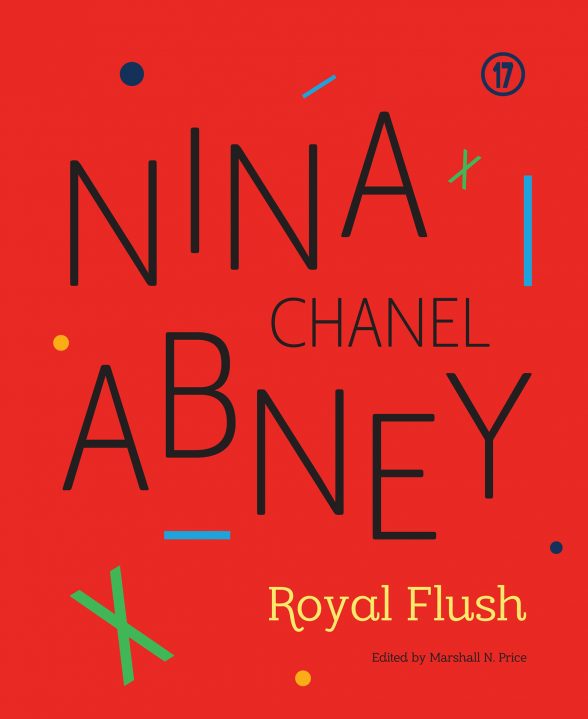
The stunning catalog for “Nina Chanel Abney: Royal Flush,” the Chicago-native’s first solo museum show, does full credit to Abney who employs flat areas of bright, polychrome paint in large works that convey their imagery with the force and clarity of billboards. Her subject is American public life from an African American perspective, and her figurative and occasionally narrative imagery situates her among a group of artists, particularly Afro-diasporic artists, who have re-invigorated figurative painting in what could be considered a revival of history painting. These include Kerry James Marshall, Henry Taylor, Lynette Yiadom-Boakye, Toyin Ojih Odutola and William Villalongo.
Abney is among a group of younger women and African-American artists whose work is receiving the attention and publication that for many years eluded artists such as Howardena Pindell and Joyce J. Scott (discussed in a previous post). It’s a great step forward, but as the “Black Radical Women” volumes attest, there’s still some reparative research to be done.
